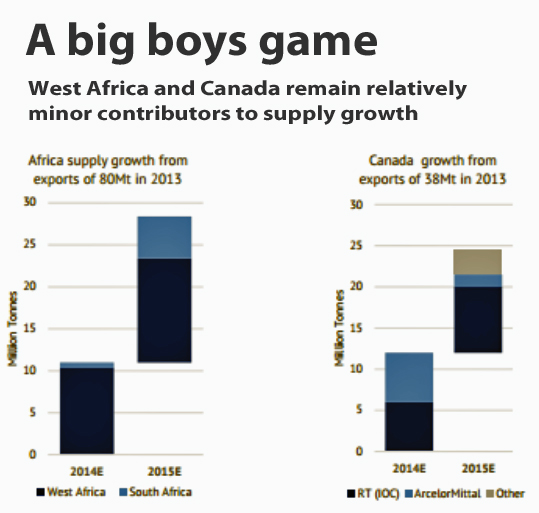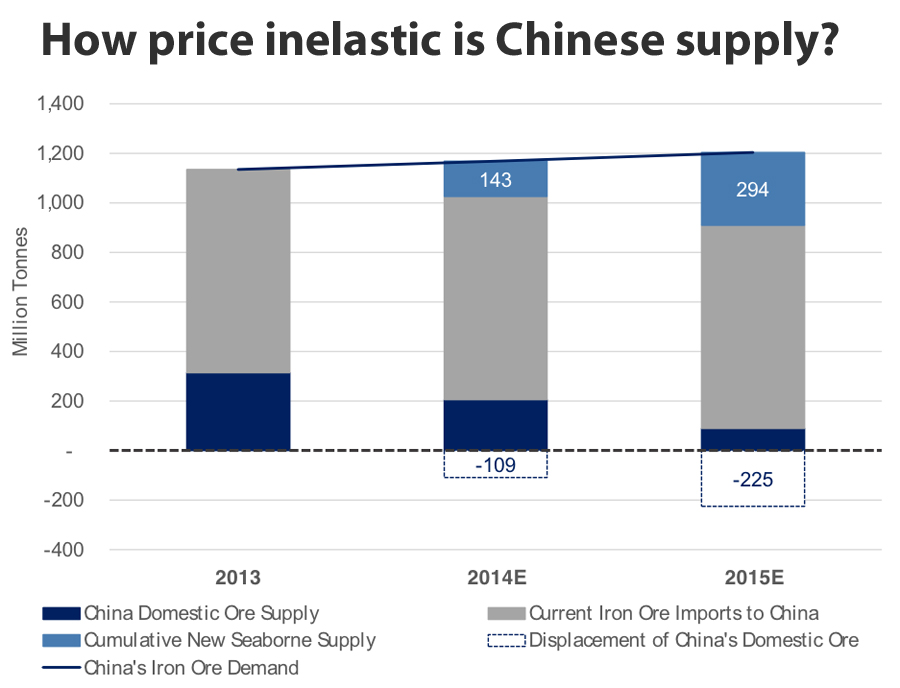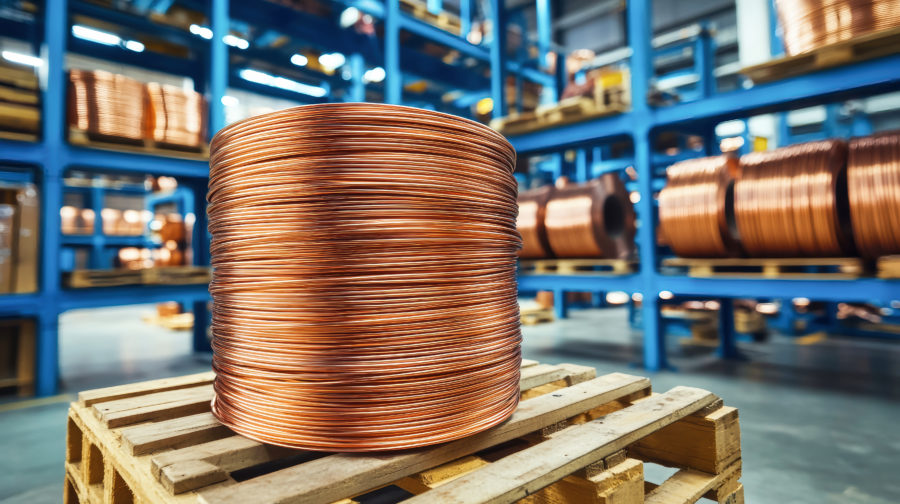CHARTS: Iron ore price won’t withstand 2015 supply flood
Dozens of marginal producers shut down last year but another 175 million tonnes will have to be displaced to neutralize 2015 output growth, which unlike copper is de-risked.

A late rally in the iron ore price at the end of last year is fizzling with Northern Chinese import prices drifting back towards the $70 a tonne level on Thursday.
Iron ore is stil up 7.6% from five-and-a-half year lows reached December 23, but was last year’s worst performing commodity falling 48%, even beating out crude oil for the dubious title.
Iron ore’s surge at the end of last year came on the back of stimulus measures announced by the People’s Bank of China designed to free up some $800 billion in funds available for loans at commercial banks.

Source: MVS Research
China imports more than two-thirds of the global seaborne trade expected to hit 1.4 billion tonnes in 2015 and forges nearly as much steel as the rest of the world combined.
But the new year brought a renewed focus on fundamentals, which still point to an industry in trouble, primarily due to a surge in supply.
Led by the Big 3, iron ore miners invested north of $100 billion in new projects and expansions since the start of the decade which pushed the market into surplus mid-2014.
This year Australia alone is set to dump an additional 48 million tonnes on the market pushing exports to 766 million – more than double the country’s output just three years ago.
Rio Tinto is well on its way to reach 360 million tonnes in the next few years. BHP Billiton’ is on target to grow capacity to 290 million tonnes per year by mid-2017. Unlisted miner Hancock Prospecting’s Roy Hill could start shipping 55-million tonnes-a-year as early as September 2015, while world number four producer Fortescue Metals have hit targeted production of 155 million tonnes per year right on time.
Top producer Vale plans to boost Brazilian output to 450 million tonnes by 2018 from 306 million last year, while Anglo American’s Minas Rio project in the country will ramp up to 26.5 million tonnes per year during 2015.
Vale makes 85% of its money from iron ore, but the top diversified miners are also heavily reliant on the commodity. At Rio Tinto it makes up 73% of earnings, BHP relies on iron ore for 52% of income while at Anglo American it’s 40%.
Because of this and despite the collapse in iron ore prices last year, the majors actually increased output to lower – already bottom of the curve – breakeven costs and drive out marginal producers.
From nearly unanimous predictions of a large surplus in 2014 also on the back of a supply surge, the copper market actually ended the year in deficit. And doubts are already creeping inabout this year increased output of the red metal.

Source: MVS Research
A trenchant research report by Minerals Value Service shows that while a disruption allowance is built into copper supply models, iron ore is a different beast.
That’s because the bulk of the new supply is coming from the majors which is almost entirely de-risked and swing producers in Africa and Canada are not contributing meaningfully to the supply flood.
While many high-cost mines fell by the wayside in 2014, another 175 million tonnes will have to displaced to bring the market into balance this year according to MVS.
Assuming global demand growth for iron ore of 3% in each of 2014 and 2015 we estimate and additional iron ore requirement of 59Mt this year, or 119Mt to 2015.
On the supply side, we estimate planned additions to the global market to be just over 140Mt this year, accumulating to over 290Mt next year. This implies that to maintain a balanced market, 84Mt of marginal production would need to come out of the market, increasing to 175Mt the following year.
China’s domestic mines produce some 350 million – 400 million tonnes a year on a 62% Fe-basis and thanks to sub-20% Fe grades and low tech sit at the top of the cost curve.
While a huge number of Chinese iron ore miners have shut up shop, the country’s supply is proving too be stickier than anticipated. That’s due to long term agreements and captive mines and the close relationship between local governments, steel mills and miners.

Source: MVS Research
{{ commodity.name }}
{{ post.title }}
{{ post.date }}




Comments